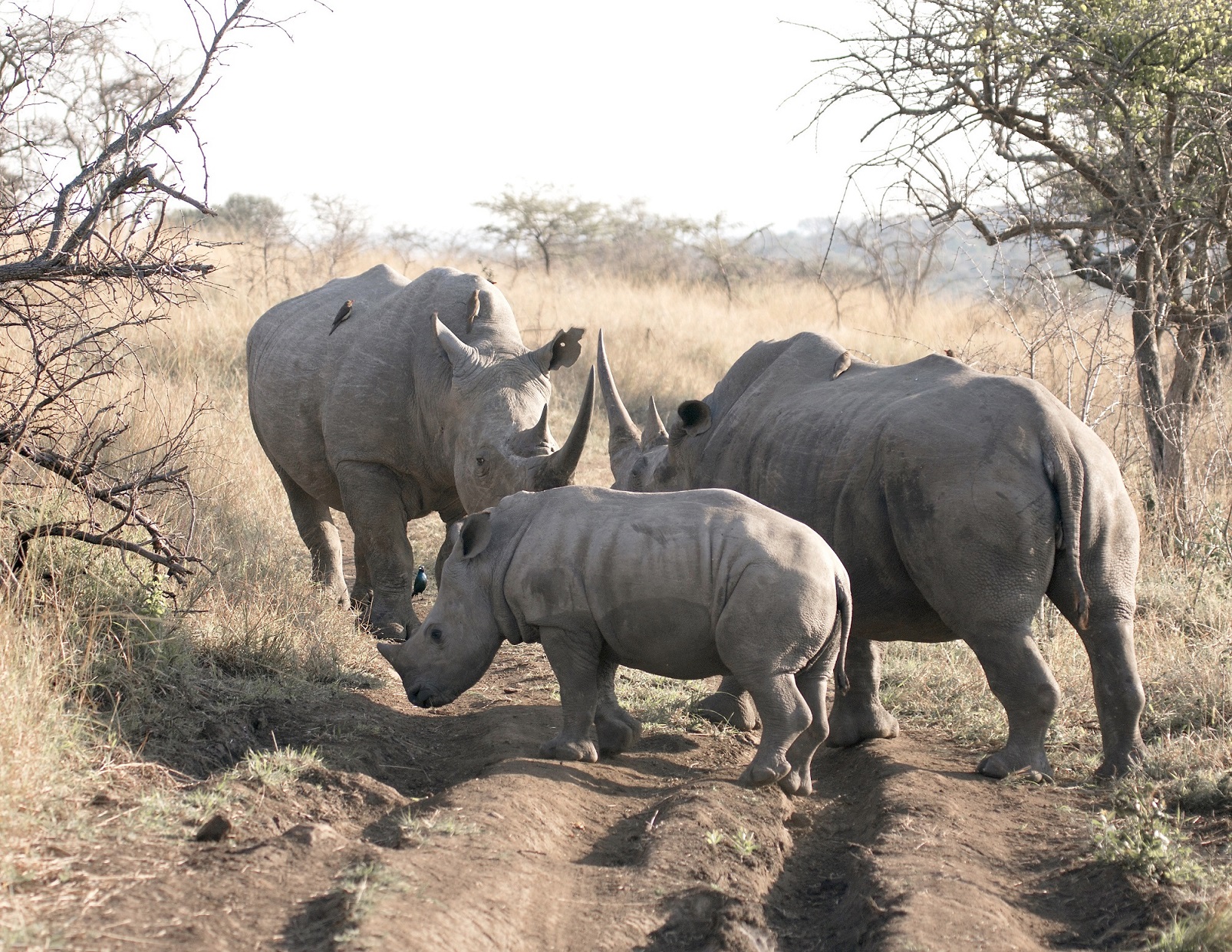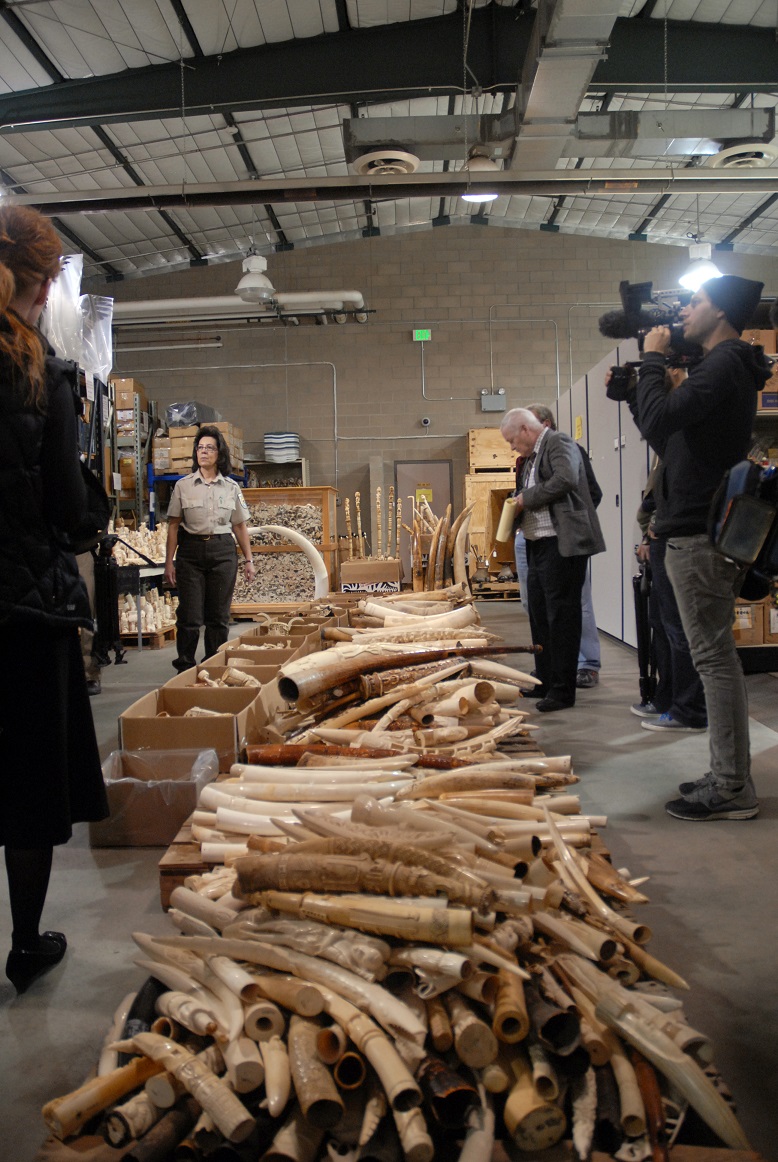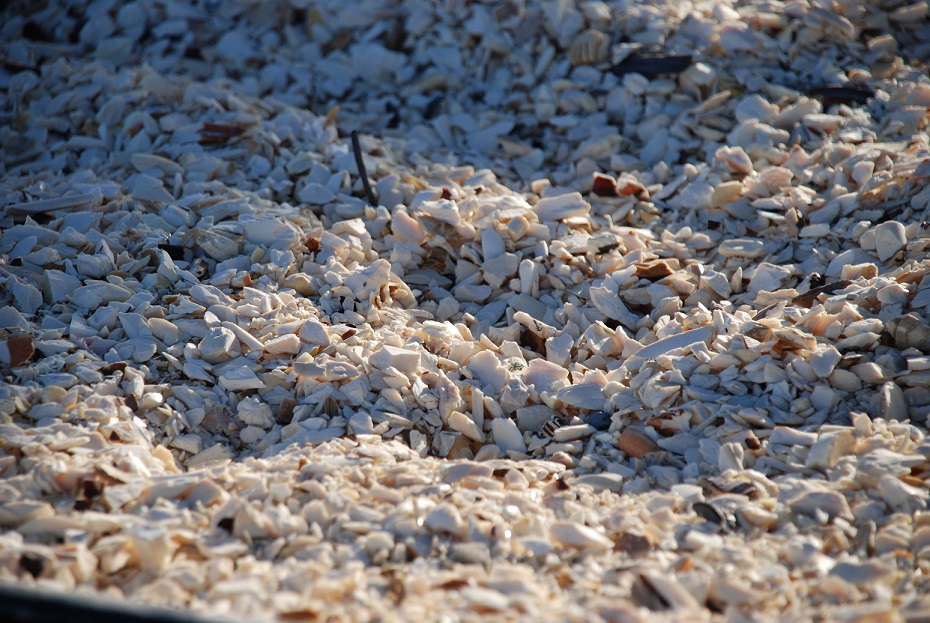A consortium of U.S. environmental groups is aggressively promoting worldwide trade bans on elephant and rhino products as a means to save these species from extinction in the wild. Unfortunately, this approach reflects an overly simplistic, U.S.-centric worldview and imposes questionable policies on other countries, with potentially disastrous consequences for both their citizens and wildlife.
Endangered species policy in the United States follows a top-down, command-and-control approach that seeks to achieve wildlife preservation using measures such as prohibition, law enforcement, and confiscation. This paradigm originated with interstate trade restrictions under the 1900 Lacey Act and has gradually evolved to include uncompensated land acquisitions, land-use restrictions, and additional regulations on “taking” endangered species under the Endangered Species Act of 1973.
That same year saw the inception of the Convention on International Trade in Endangered Species (CITES), which was also materially shaped by U.S. thinking. CITES regulates international trade in endangered species and their products through a listing system. For species listed on CITES Appendix II, international trade is regulated with a permit system. For those listed on Appendix I, international trade is simply banned, with limited exceptions for the transfer of trophies acquired through regulated sport hunting.
THIS TOP-DOWN, PROHIBITIONIST APPROACH finds favor with preservationist groups such as the International Fund for Animal Welfare. IFAW consistently opposes all commercial uses of wildlife that involve either sport hunting or the consumption of animal body parts, regardless of whether such uses are sustainable or even positive for habitat and species conservation.
As an example, earlier this year IFAW protested the auction of a black rhino trophy hunt in Namibia to U.S. sport hunters, despite the fact that the bull in question was a surplus animal past its breeding stage and that the funds from the sale would add considerably to Namibia’s annual conservation budget. Although the U.S. government initially indicated that it would allow Texas hunter Corey Knowlton to proceed with the hunt and import the trophy, his permit from the U.S. Fish and Wildlife Service is still pending.
Namibia’s approach to conservation, shared by other countries such as South Africa, is one of sustainable use. This is a bottom-up approach which recognizes the importance of providing tangible conservation incentives to the people who live alongside dangerous wild animals: rural communities and private landowners. Both Namibia and South Africa have built strong market-oriented institutions that allow people living near wild animals to receive direct economic benefits from the wildlife. Such institutions encourage locals to view wild species as assets worthy of their custodianship and investment.
The bottom-up approach relies on the creation of locally relevant institutions in which regulations are aligned with local customs and culture and are backed by a system of well-defined and enforced property rights over wild animals and their habitat. The exact nature of such institutions varies between South Africa and Namibia, but both countries share the sustainable-use philosophy and implement it with great success. My own research suggests that adherence to this approach provides the most plausible explanation for why these two countries now jointly harbor more than 90 percent of Africa’s surviving rhinos.
Unlike these Southern African countries, Kenya has implemented the top-down approach since the 1970s, maintaining state ownership of all wildlife, banning all trophy hunting, and supporting international bans on trading ivory and rhino horn. The result, according to Kenyan wildlife expert Mike Norton-Griffiths, is that Kenya has lost more than 70 percent of its big game animals since then. Local people, who benefit directly from cattle and crops but not from wild animals, allow the latter to quietly disappear at the hands of poachers as they convert wildlife habitat to more profitable uses.
South Africa’s experience stands in stark contrast to Kenya. Since the 1960s, South Africa progressively strengthened landowners’ property rights and opened up legal markets for live game sales and trophy hunts of rare animals such as the white rhino. The result has been a twenty-fold increase in the head-count of game animals, the emergence of more than 11,000 registered private game reserves, and an increase in white rhino numbers from 800 to more than 18,000 by 2010.
However, South Africa’s past success is now under threat. Despite failures elsewhere, the top-down approaches advocated by IFAW and adopted by Kenya and other countries are increasingly taking hold in international conservation policy. This response has been bolstered by growing concerns over the global rise of illegal trade in wildlife products.
THROUGHOUT THE LAST DECADE, rising prosperity in Asian consumer markets has resulted in a surge in demand for wildlife products used as ornaments, food, and ingredients in traditional medicines. This has driven up black market prices for elephant ivory and rhino horn, thereby stimulating dramatic increases in poaching rates in various African and Asian countries. Whereas CITES trade bans on ivory and rhino horn were thought to have been effective in the early 1990s, they no longer seem to be working so well in recent years.
According to trade-ban proponents, the failure of the ivory ban stems from a one-time CITES-sanctioned sale of accumulated legal ivory stocks from Southern African countries to Japan and China in 2008. They argue that by reopening a limited legal ivory carving industry in China, the one-off sale confused the market and provided cover for illegal ivory to be sold more easily—the so-called “laundering” argument. The only sensible option now, they argue, is to ban all ivory trade worldwide, not only between countries but also within countries. Extreme proponents of the ban even call for an end to all trade in pre-ban ivory artifacts and, wherever possible, the destruction of existing stocks of raw and worked ivory, including valuable antiques and heirlooms of historical significance.
The U.S. government has responded to these calls by drastically stepping up regulation of interstate trade and movement of ivory, as well as destroying its six-ton stockpile of confiscated ivory items last year. The desired outcome of such measures is to send a clear message to criminals everywhere that illegal ivory trading will no longer be tolerated. But implementing these regulations has had unfortunate consequences for a range of legitimate antique dealers and musicians, who have experienced losses of questionable necessity. A classic case in August involved the confiscation by U.S. authorities of two highly valued family heirloom vintage bagpipes from two teenage boys crossing the border from Massachusetts to Canada to play at a weekend gig.
Despite vocal protests from those affected by these draconian laws, and some serious questions over the extent to which destroying existing cultural artifacts has any bearing on current poaching levels, the U.S. government and environmental groups are now actively encouraging other countries to follow their example. Several countries have responded, including China, which swiftly destroyed six tons of its own stocks of confiscated ivory. (China’s legal carving industry remains in place, however, slowly using up legal raw ivory stocks that were purchased in the 2008 one-off sale.) Yet many African countries remain skeptical of this approach, being reluctant to destroy their own considerable stocks of accumulated ivory.
|
|
THE APPROACH NOW BEING PURSUED by the U.S. government and advocated to others is reminiscent of the “War on Drugs” declared by President Nixon in the early 1970s. It follows the same prohibitionist logic, consistent with a “just say no” philosophy. It relies on draconian law enforcement accompanied by so-called “demand reduction” campaigns that attempt to simultaneously cut off the supply of wildlife products and permanently change the behavior of consumers. In countries where elephants and rhinos survive, this results in a militarized approach to field protection that foments increasing violence at local levels, often with unfortunate consequences for civil society. It entails global efforts to hunt down and vanquish “transnational organized crime syndicates,” often portrayed as the masterminds behind this evil business.
This approach suits the agenda of environmental groups such as IFAW as well as other politicized interest groups. But it is unclear to what extent it will succeed in addressing the fundamental reasons why the world is losing its wild rhinos, elephants, and tigers. Increasingly, my colleagues in conservation research are skeptical of this approach as well as some of the supposedly “scientific” claims used to support it. Recent assessments suggest that there is still much empirical work to be done and that the bottom-up approach deserves a fairer hearing as an alternative solution.
LEADING PROPONENTS of the prohibitionist approach to ivory and rhino horn have recently argued that weak institutions and pervasive corruption in African countries preclude the establishment of any legal trading regimes, leaving global bans as the only sensible option. However, this argument is flawed. National institutions are not uniformly weak. In fact, several southern African countries have strong and effective conservation institutions, which have only been partly undermined by the resurgent poaching wave. As a one-size-fits-all policy, a trade ban penalizes countries with stronger institutions and potentially weakens them. Furthermore, the presence of corruption is not eliminated by a trade ban. If black market consumer demand persists, corruption may even be exacerbated.
A worldwide trade ban reduces the incentives of countries to further develop locally appropriate institutions and removes a potential source of income for local people, thereby devaluing the species in their eyes. It attempts to manage a localized problem—poaching—at a global level. This is an ambitious, if not impossible, task that may result in an institutional race to the bottom in which endangered species protection becomes permanently dependent on international financial aid. That’s a risky way to sustain genetically viable populations of large and dangerous wild animals.
Those who express reservations about the prohibitionist approach are often labeled as “pro-trade.” But this is inappropriate, as it implies that the mere lifting of trade restrictions is their main focus. The real issue concerns institutions—the underlying property-rights regimes and the incentives they create. Many anti-trade environmentalists simply choose to ignore this level of analysis. They also ignore the nuances between different species and situations. What may be an appropriate approach for elephant ivory may be inappropriate for rhino horn. For example, farming elephants for ivory is not a viable option, but farming African white rhinos for their horns is. Similarly, what may be appropriate for central African countries with weaker institutions may not work for southern African countries with stronger ones.
Wildlife trade prohibition follows the logic of U.S. endangered species policy. As previous research has shown, the Endangered Species Act has created perverse results within the United States, where the red-cockaded woodpecker’s endangered status spurred preemptive logging to destroy the bird’s habitat. Prohibitionist approaches to alcohol and drugs such as marijuana and cocaine are also well-documented U.S. policy failures. Despite spending billions of dollars, these attempts to shut down the drug trade have been consistently undermined by corruption, simply because the illegal trade is too lucrative to stamp out. Gram for gram, rhino horn currently fetches similar stratospheric prices as cocaine. Why should rhino horn trade be any easier to eliminate?
The South African government is now questioning whether the top-down, prohibitionist approach is sustainable. It’s a question that deserves more serious consideration and research. Ever since South Africa implemented stricter controls on its domestic rhino trade to comply with the CITES ban, it has dealt with a rapidly escalating poaching problem resulting in significant economic losses, unnecessary rhino suffering, and several hundred human deaths.
As both South Africa and Namibia have demonstrated, the bottom-up approach to wildlife, based on market-oriented institutions with well-defined property rights, is a proven and successful conservation model. Perhaps this approach ought to be exported to replace the questionable global war on illegal wildlife trade.
Read more: “The Complex Policy Issue of Elephant Ivory Stockpile Management,” by Michael ‘t Sas-Rolfes, Brendan Moyle, and Daniel Stiles. Pachyderm. No. 55 (2014).







